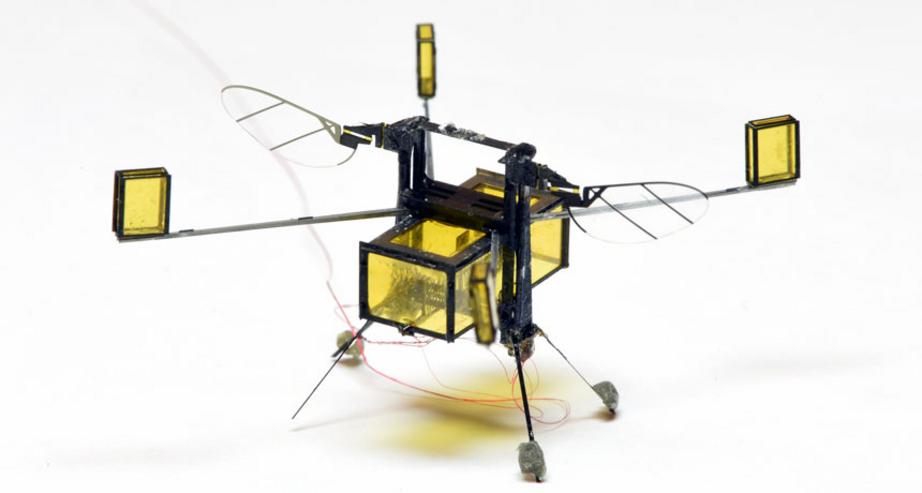This is the lightest robot that can fly, swim and take off from water
The insect-inspired machine is about 1,000 times lighter than previous aerial-aquatic bots
Weighing the same as about six grains of rice, it is the lightest robot that can fly, swim and launch itself from water, an international team of researchers reports October 25 in Science Robotics. The bot is about 1,000 times lighter than other previously developed aerial-aquatic robots. In the future, this kind of aquatic flier could be used to perform search-and-rescue operations, sample water quality or simply explore by air or sea.
To hover, the bot flaps its translucent wings 220 to 300 times per second, somewhat faster than a housefly. Once submerged, the tiny robot surfaces by slowly flapping its wings at about nine beats per second to maintain stability underwater.
For the tricky water-to-air transition, the bot does some chemistry. After water has collected inside the machine’s central container, the bot uses a device to split water into hydrogen and oxygen gas. As the chamber fills with gas, the buoyancy lifts the vehicle high enough to hoist the wings out of the water. An onboard “sparker” then creates a miniature explosion that sends the bot rocketing about 37 centimeters — roughly the average length of a men’s shoe box — into the air. Microscopic holes at the top of the chamber release excess pressure, preventing a loss of robot limbs.
Still, the design needs work: The machine doesn’t land well, and it can only pierce the water’s surface with the help of soap, which lowers the surface tension. More importantly, the experiment points to the possibilities of incorporating different forms of locomotion into a single robot, says study coauthor Robert Wood, a bioengineer at Harvard University.
BUGGING OUT Not only can this insectlike robot fly and swim, but it also splits water into hydrogen and oxygen gas, which the bot ignites to propel itself from the water. Y. Chen et al,/em>/Science Robotics 2017
For the rest of this article please go to source link below.
For full references please use source link below.
Video can be accessed at source link below.

